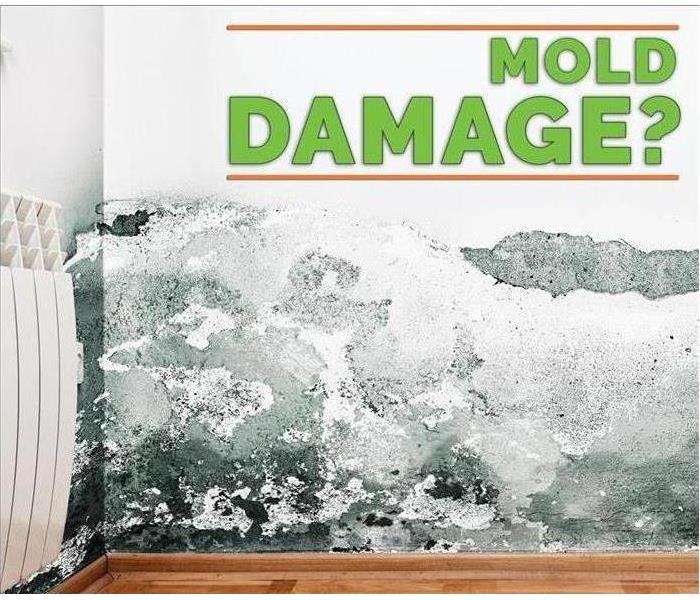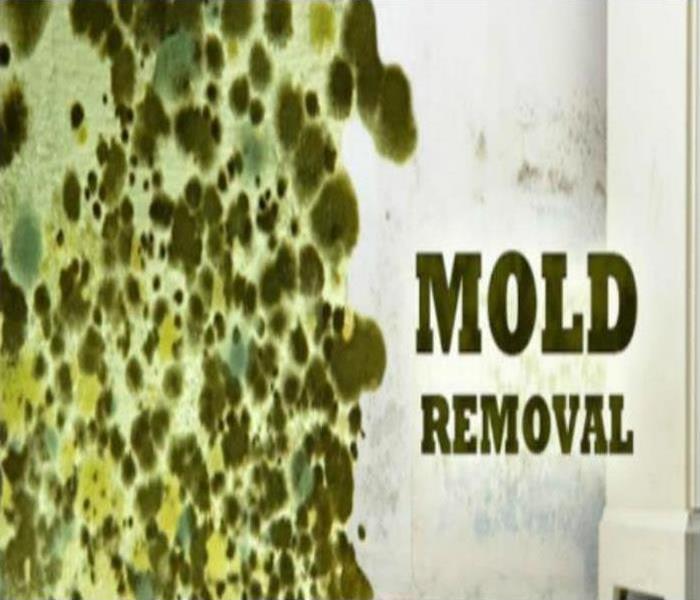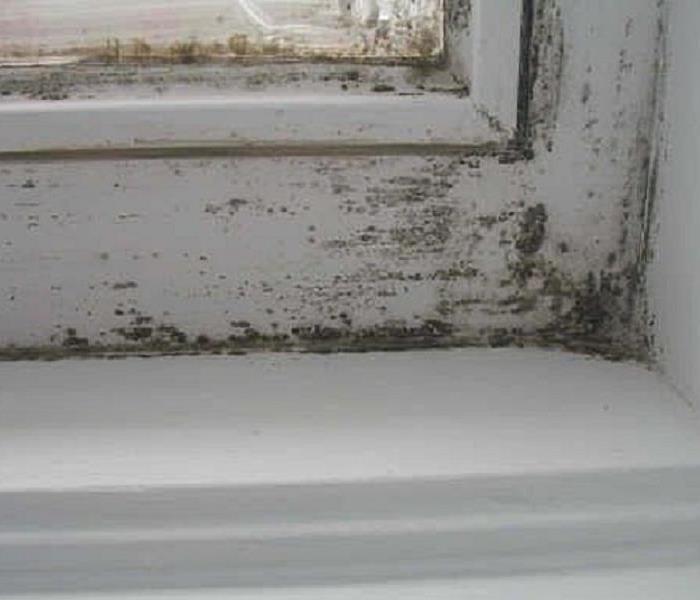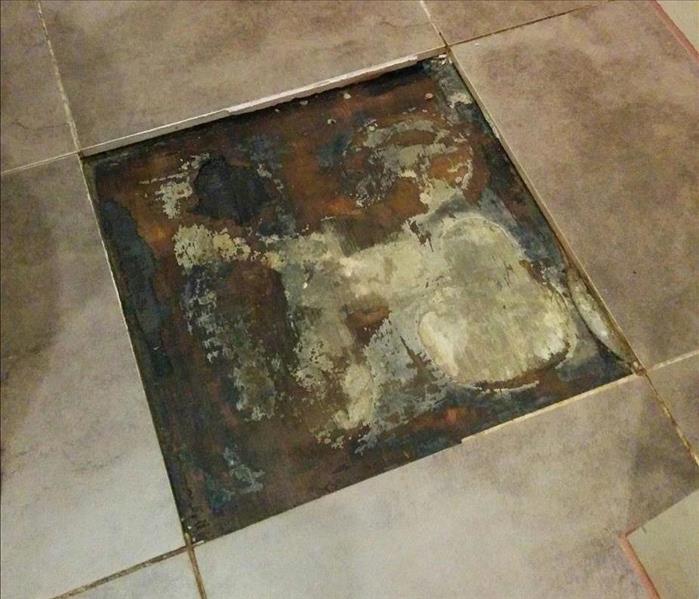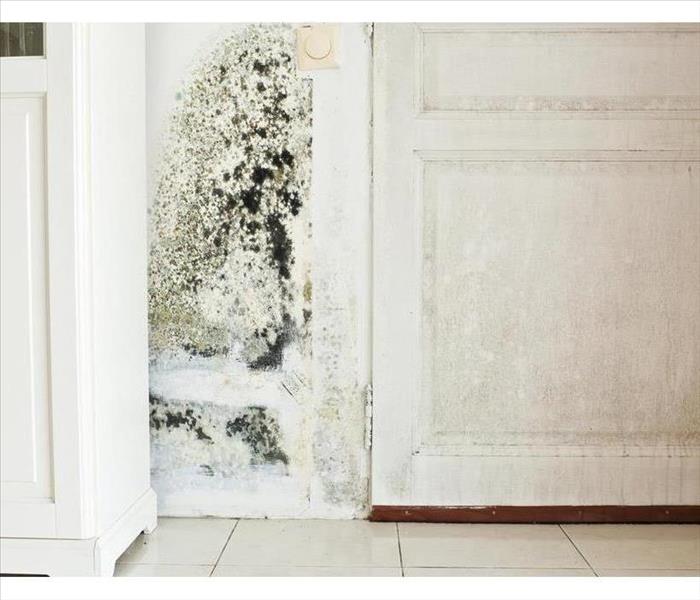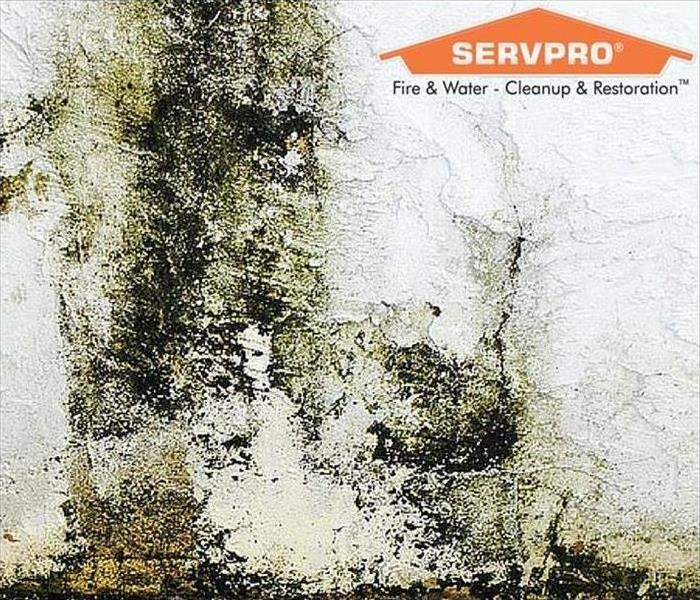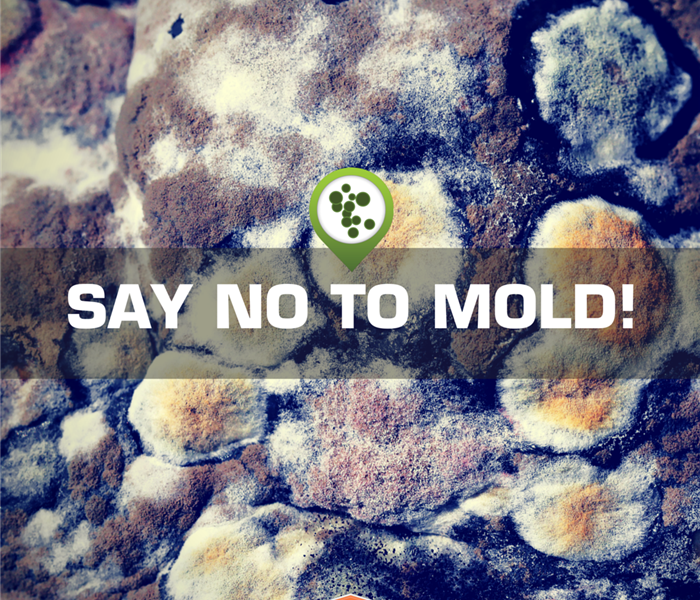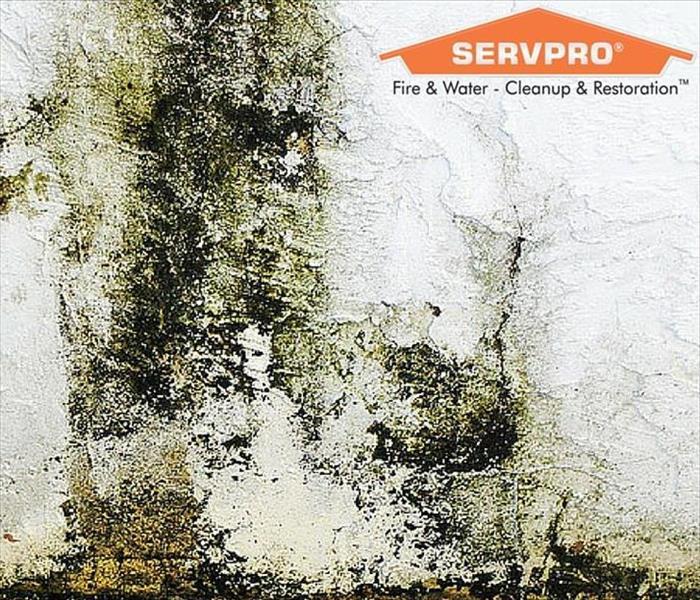Recent Mold Remediation Posts
We Stop Mold Damage in Your Setauket Residence from Spreading
12/12/2024 (Permalink)
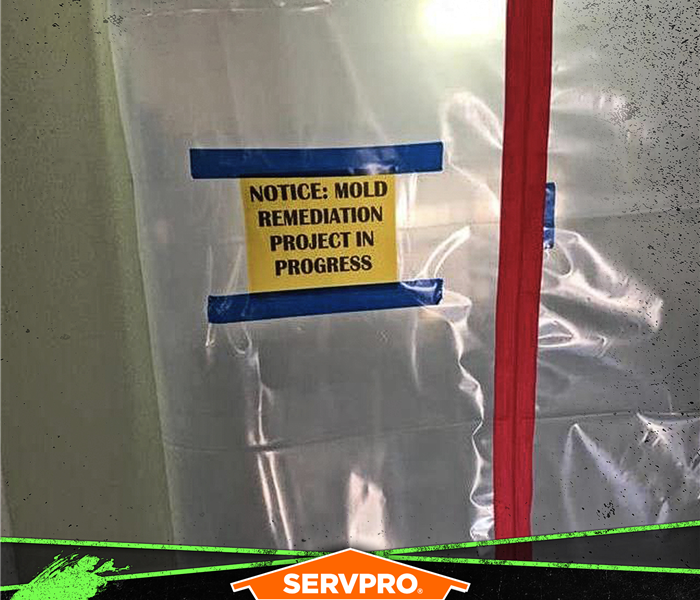 Mold damage restoration is a long and involved process. Contact SERVPRO for certified technicians who are ready to help you.
Mold damage restoration is a long and involved process. Contact SERVPRO for certified technicians who are ready to help you.
Spores Easily Propagate Mold Colonies in a Home
Microbes are everywhere, including in clean, sanitary places like a hospital or clinic and our houses. When the water vapor inside your Setauket residence increases, reproducing becomes much easier for any existing microbes. Increased mold colonies make mold damage easier to harm your home's interior. We also attend to any related water damage.
SERVPRO® wants our customers to understand how mold damage happens to Setauket homes. When an air current or other disturbance occurs near an existing area with mold-producing spores, the mold instinctively releases spores into the air. These microscopic spores travel within the air until they slowly settle somewhere. Spores that land in suitable environments can develop into a thriving infestation.
This damage is why SERVPRO wants to help families prevent mold damage in the first place. Colonies of mold:
- Destroy your home's interior,
- Create bad smells wafting through your residence, and
- Leave stained surfaces, including clothing.
Mold needs organic substances to survive. Choice materials in the typical home include drywall, paneling, and carpeting. As microbes eat away at these materials, the substances break down for two reasons - the consumption as a food source and also because the microbes' hyphae cause the material to physically disintegrate. SERVPRO understands the steps to restore or replace materials affected by mold damage.
Each time spores enter the air, they remain there until they collide with something. Inhaled spores cause receptors in the nose to register foul, distinctive odors. SERVPRO handles odors from mold infestations, too.
Mold damage includes stains on building materials and textiles. Textiles consist of bedding, window dressings, and clothing. We have specialized treatments for these items.
When your Setauket property sustains damage from microbial activity, call SERVPRO of Port Jefferson. You can trust us to provide a comprehensive service that addresses all the issues related to mold damage.
How Fast Does Mold Grow?
7/25/2018 (Permalink)
Mold can grow almost anywhere that there is moisture and a moderate temperature of around 70 degrees. Many different types of molds can grow inside your home without you even knowing. Most cases of mold go unnoticed until it covers an entire wall. How? Because mold mostly grows in places you don't see every day like an attic, garage, or laundry room. But how fast does mold spread? Unfortunately, mold starts growing immediately after spores are attached to an item. Mold will continuously grow and begin to colonize no later than 12 days after the initial invasion. Mold won't wait until you're ready, get the problem fixed now.
If you see mold growing in your home, call SERVPRO of Port Jefferson to start the mold removal to get your home back to being mold free.
Don't Let it Spread: Common Types of Mold
7/18/2018 (Permalink)
Let's face it. Mold can grow almost anywhere, and a comfortable house is one of the prime locations for mold to thrive. However, knowing what you're looking for can help you stop the spread and damage that mold can cause.
Below are the five most common household molds:
- Alternaria
Alternaria is a large spore mold that can cause health effects. This mold starts out as dark or gray spots which start to spread quickly.
Where to look for it in your house:
-carpets
-textiles
-house dust
-damp areas (i.e., window frames and showers)
- Plants, trees. grasses, and soil
What to look for inside your home:
-dark or gray spots which are spreading
-musty smell
It's safe to say that Alternaria, while it is typically found outside, can easily wind up in your home. If you have any suspicions about mold being in your home contact SERVPRO® of Port Jefferson at 516-733-1800.
- Aspergillus
This mold is generally found in warmer climates where water damage has occurred. However, this mold can grow in extremely damp environments and has been found in household dust and compost piles.
"Though only a lab test can truly verify the identity any variety of mold, you can suspect that mold is from the Aspergillus genus if it has a powdery texture and an extremely high growth rate" (IndoorDoctor, 2016).
- Cladosporium
This fungus is common outdoors but can enter your home through the HVAC and airflow entryways. When indoors, this mold can grow on textiles, wood and other porous locations with a damp environment. Whether it is growing indoors or outdoors Cladosporium can cause health affects.
Where to look:
-Wallpaper
-Carpets
What to look for:
-black, brown, or green spots
These spots will start out small, but if left alone will keep growing.
- Penicillium
Penicillium is one of the most common molds indoors and outdoors.The Penicillium that we have all known are the types that cause food decay. When food starts to rot, we can easily see Penicillium appear to start the decomposing.
Where to look:
-Wallpaper
-Wallpaper glue
-Decaying fabrics
-Carpet
-Interior fiberglass duct insulation
Since this mold is prevalent, if there is a leak in your roof it would be essential to have someone inspect for mold.
- Stachybotrys
The harder the name is to pronounce, the more toxic the mold is. Stachybotrys is a type of black mold that causes significant health effects. However, this mold is the least common in households and needs plenty of running water to grow and is easily identifiable with its black and slimy texture.
Help your home stay safe by staying educated. For more information about mold, fire, hurricane, and water damage safety go to SERVPRO.com. If you are concerned about mold in your home call SERVPRO® of Port Jefferson at 516-733-1800.
References
Mold Answers: A Home Owner's Guide to Mold Removal
Achoo! Allergy
Indoor Doctor
Cleaning Mold with Bleach is never the answer
5/2/2018 (Permalink)
Chlorine Bleach is often regarded as the answer for stopping mold growth and removing the mold. However, this is a myth. Bleach does not exonerate mold. Here are three reasons why bleach is not the answer to mold, and should never be used to clean a mold contaminated area.Bleach Loses Effectiveness Over Time
Chlorine bleach can dissipate rapidly, causing the bleach to be less effective. Over time this occurs because chlorine can evaporate and even faster in areas that are above room temperature. When the chlorine disappears, the bleach bottle turns into a bottle of salt water.
Bleach can actually contribute to mold growth
Chlorine bleach was made to clean surfaces, therefore can only kill surface bacteria and mold. This is due to bleach’s ion structure, which prevents the chlorine from penetrating porous material such as wood and drywall. When mold grows in porous areas, the enzyme’s roots grow deep within the material, rendering the bleach ineffective of exterminating the mold. The bleach can only remove the green stain from the mold, allowing surface to appear clean. But underneath the surface, the water component of the bleach penetrates and helps the internal roots to continue to grow, causing mold to reappear.
Bleach is Toxic
Bleach emits harmful fumes that pollute the air we breathe and can become harmful to humans and even pets. Over a period of time, inhaling the gases bleach emits can deteriorate the lungs and esophagus lining in addition to the scarring of the respiratory tract, which occurs in earlier stages. Also research shows that household bleach is one of the leading causes of accidental poisonings in the United States.
Is anything lurking in your bathroom?
4/27/2018 (Permalink)
Mold in bathrooms is a common problem in almost every home. Darkness combined with excessive moisture provides the perfect conditions for consistent mold growth. Constantly cleaning and re-caulking, to keep a growth problem under control, can be time consuming and expensive. The best defense against mold is to prevent it from occurring in the first place. Here are a few tips to help stop mold growth in your bathroom:
- Run the ventilation fan while you are showering, and leave it on for 15 minutes after. If you don’t have a fan open a window or use a dehumidifier.
- Use a sponge after a bath or shower to remove some of the excess moisture or a small towel can be used to dry any accumulated water.
- Try to avoid keeping a ton of things inside of the bath/shower. They can hide mold growth as well as collect water to promote it. Children’s toys are particularly notorious for growing mold, so be sure to dry them as much as possible and clean them regularly.
- Fix leaky faucets and shower heads.
- Use a shower curtain that can be put in the washing machine. There are also many mold-resistant liners available.
- Clean out the shower and wash bathroom rugs regularly.
- Check for any other signs of mold in the bathroom under the sink, behind the toilet, etc.
If you are consistently experiencing mold in your bathroom regardless of how often you clean you may have a larger hidden problem. Call SERVPRO of Port Jefferson today 631-476-5300
Cold Weather bring moisture problems
12/1/2017 (Permalink)
In colder weather, warm air from heating systems rises into attics, where it meets under the cold roof, often causing condensation. Mold thrives in moist and warm areas where a food source such as wood is present.
Most people think spring showers bring moisture problems, but it’s in winter that mold tends to become even more of an issue.
So proper insulation between your attic and living areas is crucial. If you’re not sure your insulation is working properly, you should have it checked.
Most homes have numerous trouble spots for mold and moisture. In homes tightly sealed for winter, warm air can’t easily escape. When windows are sealed tight, condensation tends to collect indoors on windows and even walls, creating an optimal area for mold to grow. In kitchens, steam accumulates from dishwashers. In bathrooms, showers create warm, moist conditions.
Proper ventilation in these areas of the home are crucial to prevent mold.
Homeowners also need to be aware of mold growth after a winter storm. After a storm, you need to check your home for damage from snow, ice and freezing temperatures to prevent mold from spreading into your home.
Damage can often go unnoticed until the spring thaw, but by then it may be too late because water might have infiltrated the walls of your basement, attic or other areas of your home.
Here’s a checklist to assess key parts of your home:
Roof checklist to prevent mold
- Check for any loose or missing shingles, which need to be replaced or repaired immediately.
- Inspect for leaks around chimneys, plumbing and attic vents as well as skylights.
- Remove any tree limbs that are near the roof that could potentially break and fall through your roof.
- Examine the attic and crawl space to make sure you have no leaks that could damage the ceilings.
Gutters and downspouts
- Check to make sure the gutters and downspouts are securely and properly attached to your home.
- Make sure your downspouts are cleared of leaves, branches and any other debris so that water can flow freely.
- Extend downspouts away from your home’s foundation.
Siding, windows and doors
Look over your siding to make sure nothing has come loose or is damaged.
Make sure your seals are tight on doors and windows. Check the outside caulking for any damage or leakage.
Wipe up any window condensation on inside windows, especially metal windows.
Consider replacing metal window frames and other exterior door edges with vinyl to avoid air and water leakage.
The small things aren't always small
9/22/2017 (Permalink)
Water Intrusion in one room can mean water damage in another.
You reach for the towels, wet vac, mops and fans to clean up the water. The surface water is now dry and the problem is solved. Or is it?
What happened to the water that traveled into the floor, sub floors and wall? Was all the moisture caused by the incident removed? Water intrusion in a home can linger leaving subtle, yet lasting effects if not completely removed from the structure. Homeowners can remove standing water with appropriate precautions to help prevent further damage. But, how do you remove water and moisture in flooring and walls.
You are not alone. SERVPRO of Port Jefferson/Stony Brook Professionals are trained in the cleanup and care of your home following a water intrusion. Whether the intrusion occurred from a small incident or a major water event, removing excess moisture can prevent more serious damage such as microbial growth.
Before you risk doing further damage by attempting to clean up the water yourself, call the cleanup and restoration professionals 631-476-5300 No damage is too small nor too big for SERVPRO.
When Dealing with Mold, Don't Just Hire Anyone
5/16/2017 (Permalink)
Some forms of mold can add value to our lives, other forms can be harmful. Over 100,000 different kinds of fungi have been identified. Excessive amounts of mold, different types of mold, and/or exposure to molds may present health concerns for some people.
Intrusion of water into your home or place of business can result in mold growth Water intrusions from storm damage, plumbing or equipment failure, long standing leaks, and poor humidity control. When water intrusions are not addressed right away, the resulting damage can present increased risk or harmful mold growth. If the humidity and moisture levels in a water-damaged environment are not promptly returned to normal, mold spores may grow and multiply.
SERVPRO of Port Jefferson Professionals handle water damages every day and know prompt action is required to prevent mold growth. If there is an ongoing moisture problem in the building, be alert for:
- The presence of visible mold
- Strong musty odors, which may indicate mold is present
- Any evidence of past moisture problems that might have caused undetected mold growth
- Excessive humidity
These conditions may require the expertise of a qualified Indoor Air Quality/Environmental Professional to inspect the building for mold growth and water damage problems.
SERVPRO of Port Jefferson care about proper restoration of you structure and, in most water damage situations, can safely restore your building to preloss condition.
If you think you have a mold problem, feel free to call SERVPRO of Port Jefferson today to protect your health and your property. 631-476-5300
SERVPRO of Port Jefferson - Can help you with your spring cleaning!
4/7/2017 (Permalink)
Need help with your spring cleaning? SERVPRO of Port Jefferson can help. We offer various services to our residential and commercial clients. Not only do we handle storm damage disaster cleanup, we offer the follow (to name a few..):
Air Duct Cleaning - Our SERVPRO professionals can inspect your HVAC system and duct work. Cleaning services can be provided to help restore peak energy efficiency, eliminate offensive odors, and improve indoor air quality.
Carpet Cleaning - Our professional cleaning can address moderate and heavy soil conditions in your carpets. How often you’ll need professional cleaning depends on soil build-up, traffic, type and color of carpeting. A good rule of thumb would be to professionally clean your carpet every 12 months.
Odor Identification And Deodorization - Our SERVPRO professionals will find the source of the odor and determine the best methods to neutralize and eliminate the odor from your home or business.
Upholstery And Furniture Cleaning - SERVPRO professionals can inspect and test fabrics to determine the safest and most effective cleaning method, to effectively extend its useful life.
631-476-5300
Mold Remediation for your Port Jefferson Home
11/22/2016 (Permalink)
Mold is a type of fungus that grows on a variety of surfaces in damp and dark environments. Like other fungal growths, mold spreads by releasing invisible spores into the surrounding air. These spores then settle on new surfaces. The spores can also remain in the air for long periods and may repopulate mold colonies on surfaces that were previously cleaned. Mold can come in a variety of colors.
Mold Removal
The quick and complete removal of a mold colony is the only way to protect against the health hazards of mold. Mold can be scrubbed away with hot soapy water for a quick fix. Control of moisture will lessen mold growth, but mold is notoriously difficult to eradicate. Hiring a professional service, such as SERVPRO, will ensure that mold is cleaned away completely and that the initial cause of the mold growth is fixed. Cleaning the air in the home is also important to eliminate airborne spores that may repopulate the mold. Air purifiers or filters are effective at eliminating spores.
SERVPRO of Port Jefferson is locally owned and operated
We are proud to serve our local communities and can remediate your mold problem quickly and safely. Call us Today 631-476-5300
Understanding Mold
7/13/2016 (Permalink)
Microscopic mold spores exist almost everywhere, outdoors and indoors, making it impossible to remove all mold from a home or business. Some restoration businesses advertise “mold removal” and even guarantee to remove all mold, which is a fallacy. Consider the following mold facts:
Mold is present almost everywhere, indoors and outdoors.Mold spores are microscopic and float along in the air and may enter your home through windows, doors, or AC/heating systems or even hitch a ride indoors on your clothing or a pet.Mold spores thrive on moisture. Mold spores can quickly grow into colonies when exposed to water. These colonies may produce allergens and irritants.Before mold remediation can begin, any sources of water or moisture must be addressed. Otherwise, the mold may return.Mold often produces a strong, musty odor and can lead you to possible mold problem areas.Even higher-than-normal indoor humidity can support mold growth. Keep indoor humidity below 45 percent.Ah, isn't mold quite the sight? Though it is mesmerizing to look at, it can also be toxic for your health. If you're dealing with a mold infestation on your commercial or residential property, call SERVPRO of Port Jefferson/Stony Brook. We have the knowledge and tools to make it "Like it never even happened." Call us today. 631-476-5300
Don't Let Mold Grow!
3/3/2016 (Permalink)
Intrusion of water into your home or place of business can result in mold growth. Water intrusions can result from storm damage, plumbing or equipment failures, long-standing leaks and poor humidity control. When water intrusions are not addressed right away, the resulting damage can present increased risk of harmful mold growth. Some amounts of mold spores are normally present in most environments. If the humidity and moisture levels in a water-damaged environment are not promptly returned to normal, mold spores may grow and multiply. Organic materials found inside a building, such as wood, paper, drywall and insulation, provide food sources for mold to flourish. Excessive mold growth can lead to indoor environmental conditions that can cause health effects.
SERVPRO of Port Jefferson/Stony Brook handle water damages every day and know prompt action is required to prevent mold growth. Mold is more likely to spread when an environment has been subject to moisture for a long period of time. If your property has sustained recent water damage, it is vital to remove excess water and dry the structure promptly. If there is an ongoing moisture problem in the building, it is important to be alert for:
The presence of visible mold.Strong musty odors which may indicate mold is present.Any evidence of past moisture problems that might have caused undetected mold growth. Excessive humidity.These conditions may require the expertise of a qualified Indoor Air Quality/Environmental Professional to inspect the building for mold growth and water damage problems
If you think you might have a mold problem, call today (631) 476-5300.
Our trained SERVPRO Professionals trained in mold remediation will examine the structure for any visible signs of mold. If extensive mold growth is present, additional assistance may be required. Some situations require the addition of an Indoor Air Quality/ Environmental Professionals with the specialized equipment and services needed to assess and/or repair property. You may wish to consult your adjuster if needed.
SERVPRO cares about proper restoration of your structure. In most water damage situations excessive mold growth is not a problem for your SERVPRO Professionals. We can safely restore your building to pre-loss conditions. The need to address the presence of mold can only be determined by an on-site, indoor environmental inspection.
 Mold damage restoration is a long and involved process. Contact SERVPRO for certified technicians who are ready to help you.
Mold damage restoration is a long and involved process. Contact SERVPRO for certified technicians who are ready to help you.






 24/7 Emergency Service
24/7 Emergency Service